Over 3 million pictures framed
How To Achieve Feng Shui In Your Living Room
We have teamed up with the Editorial team from Marble.com to help create an in-depth guide to Feng Shui.
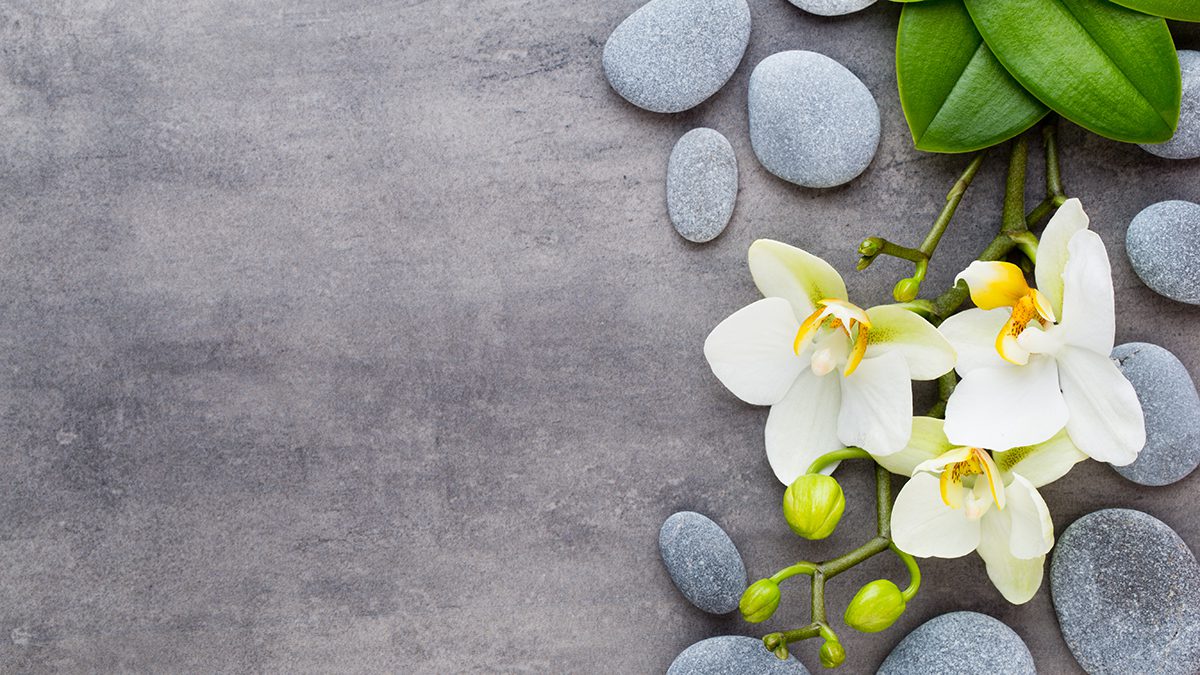
Feng-Shui as a design principle, has a long history. When translated from the Chinese language, Feng Shui stands for wind and water. The actual discipline and associated philosophies date back several thousand years. In fact, Feng Shui came into existence back when early people were settling into farm life to grow crops. The concept was designed to help families flourish and prosper in their environments and to determine burial places for their loved ones.
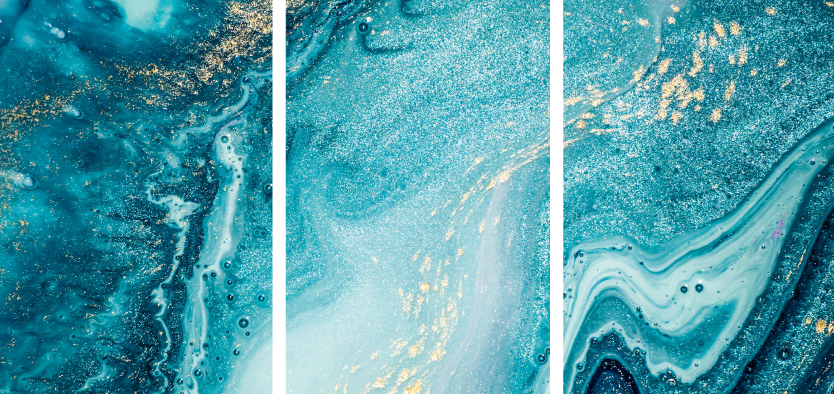
Though the idea of applying a design concept to your home that was used as part of ancient burial practices might not seem all that lucrative or desirable, it is hard to put aside the fact that Feng Shui does provide practical insights for design that can truly draw life and positive energy into a room. So this all said, how can Feng Shui be used to select artwork to complement your living room space?
1. Putting Feng Shui to work when selecting artwork for your living room
Feng Shui-style paintings can play a significant and positive contribution to the overall energy and flow within your living room space, and this concept applies to paintings and artwork too. The Bagua map (a tool in Feng Shui) can be used to help homeowners determine where artwork should be placed in their spaces.
So, print out a Bagua chart and use it to map out the layout for your room.
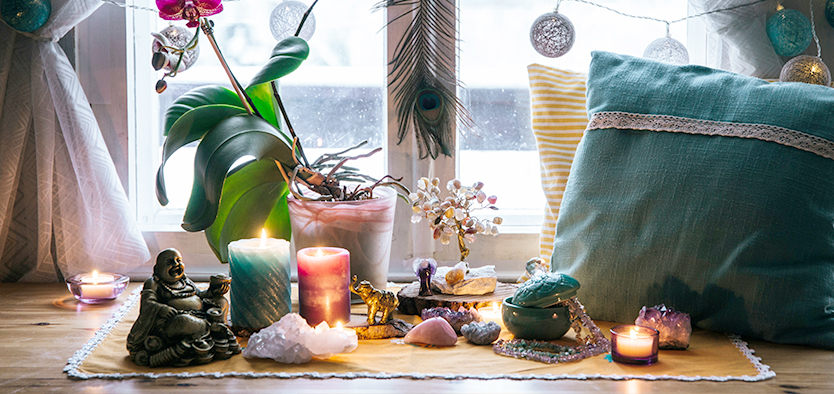
2. Incorporate the elements into the artwork in your living room
Feng Shui experts highly suggest that at least one of the five natural elements is incorporated into the artwork in your living room. Doing this will provide an elemental energy. The five elements in Feng Shui are fire, wood, water, metal, and earth. The creative cycle is the first energy cycle created by chi, which is a life source. When the life source falls to the earth, it creates water that becomes the creator of all life. If chi could not convert into water, there would be no life. The creative cycle then continues through the rest of the elements in the order of creation. For example:
- Fire enhances earth, weakens metal, and reduces wood
- Earth enhances metal, weakens water, and reduces fire
- Metal enhances water, weakens wood, and reduces earth
- Water enhances wood, weakens fire, and reduces metal
- Wood enhances fire, weakens earth, and reduces water
Here are some quick pointers on what to consider for the paintings in your living room:
- Fire – Candles, fireplaces, or other fiery things
- Earth – Mountains, crystals, plants, etc.
- Metal – Cars, coins, or silver
- Water – Rivers, waterfalls, lakes, oceans, vases of water, or other liquids
- Wood – Trees or driftwood, landscapes of a forest or wooded area and similar images
Now that you better understand the five elements and the roles that each play in the balance of chi, you can begin to find a balance of chi within your living room and the rest of your home. The key to successful Feng Shui is attaining a balance of yin and yang. For those less familiar with the concept of yin and yang, the dark swirl is ying, and is associated with femininity, shadows, and the trough of a wave. The light swirl is the yang and represents brightness, passion, and growth.
3. Aligning colours to the elements of your artwork
Of course, you probably don’t want all of the artwork in your living room to be in black and white. Thankfully, you can align the elements from Feng Shui with particular colours to help give the room more dimension.
- Fire – use red, orange, or purple to reflect joy, vibrancy, passion, and warmth
- Earth – brown, beige, yellow, and earth tones reflect stability, grounding, nurturing, and receptivity
- Metal – brown, black, white, grey, and metallics reflect energy moving inward, productivity, rational thinking, and intellectualism
- Water – blue or aqua reflect tranquillity and peace
- Wood – brown or green reflect prosperity and spur renewal
Paintings with these colours can help tone down areas where you have too much of a certain energy, especially when using the Feng Shui cycle of destruction with fire weakening metal, earth weakening water, metal weakening wood, water weakening fire, and wood weakening earth.

4. Depicting the seasons
If your paintings reflect a particular season, or if you wish to change out the artwork throughout the year based on the season, you should align your colours based on the Bagua chart.
- Fire – Early summer
- Earth – Late summer
- Metal – Autumn
- Water – Winter
- Wood – Spring
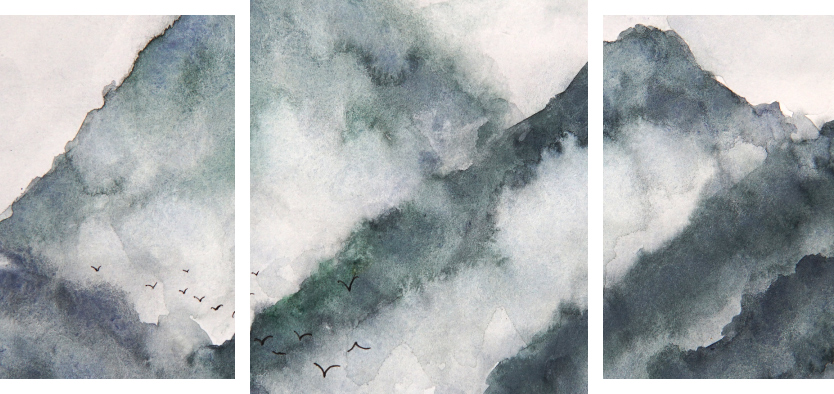
You could also put your framed art on sideboards, chests of drawers or any other flat surface. It’s also super popular to use picture ledges in Scandinavian homes to display a set of prints above the sofa for example. This is good for those of you who like to swap things around and redecorate every 2-3 months as you can easily change the prints and the vibe of your room without having to drill or re-measure distances, etc. You’ll fix up your ledges just once and then get creative!
If you’re going for a more formal look or have small children and want to play safe hanging your prints on the wall is probably your best bet. For big and heavy stuff I would go for drilling and proper hanging solutions suitable for the type of wall, but for photo collages and matching print collections that are framed using acrylic, you could use picture hanging products that just stick to the wall and are easy to remove without damage. If you’re not experienced in measuring frame heights and distances, this is also the easiest way to get it right, because you can change it as many times as you want, plus it’s a “see what you get” kind of technique – unlike drilling holes and then guessing how the prints will hang.
If you move along the compass, you can associate directions to the element as follows:
- North: Water
- Northeast: Water and metal
- East: Wood
- Southeast: Wood and fire
- South: Fire
- Southwest: Fire and metal
- West: Metal
- Northwest: Metal and water
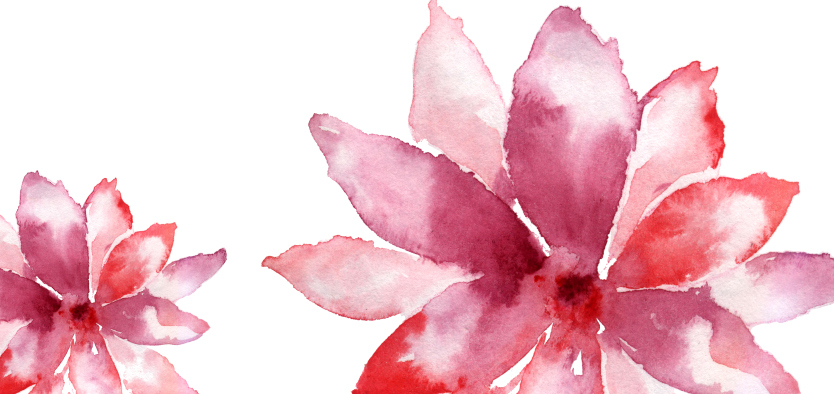
All of this doesn’t mean you need to be a minimalist. But, when you incorporate Feng Shui into your design, it’s best to do so in moderation. And keep in mind that size is relevant.
Larger paintings will bring a greater sense of energy than smaller paintings. On a similar note, a watercolour will create a softer energy due to the less vibrant colours. When framing your artwork, you should also consider the element that it depicts as this too will help maximise energy but maintain a proper balance.
No matter what you select, when using Feng Shui, keep in mind that the goal is to circulate the energy. But also, be sure you select artwork that you love. By following the above recommendations, you will be sure to create a well-balanced room that is functional, beautiful, and properly energising.
